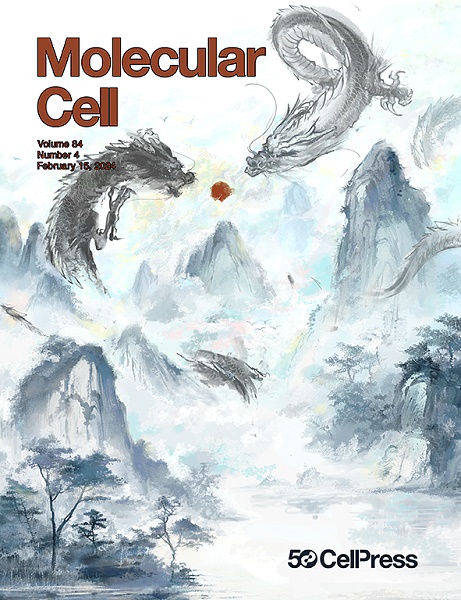解码信息末端:PASTA 为替代性多腺苷酸化机制提供了思路
IF 14.5
1区 生物学
Q1 BIOCHEMISTRY & MOLECULAR BIOLOGY
引用次数: 0
摘要
Kowalski 等人1 最近在《细胞》(Cell)杂志上发表了一篇论文,他们开发了一种跨学科的多重方法来揭示替代多腺苷酸化的调控模块,其中包括基于单细胞的基因扰动、同工酶丰度分析、RNA 主题的机器学习以及大规模并行报告实验。本文章由计算机程序翻译,如有差异,请以英文原文为准。
Decoding the end of message: PASTA provides food for thought on mechanisms of alternative polyadenylation
In a recent publication in Cell, Kowalski et al.1 developed an interdisciplinary and multiplexed approach to uncover regulatory modules of alternative polyadenylation, involving single-cell-based gene perturbation, isoform abundance analysis, machine learning of RNA motifs, and massively parallel reporter assays.
求助全文
通过发布文献求助,成功后即可免费获取论文全文。
去求助
来源期刊

Molecular Cell
生物-生化与分子生物学
CiteScore
26.00
自引率
3.80%
发文量
389
审稿时长
1 months
期刊介绍:
Molecular Cell is a companion to Cell, the leading journal of biology and the highest-impact journal in the world. Launched in December 1997 and published monthly. Molecular Cell is dedicated to publishing cutting-edge research in molecular biology, focusing on fundamental cellular processes. The journal encompasses a wide range of topics, including DNA replication, recombination, and repair; Chromatin biology and genome organization; Transcription; RNA processing and decay; Non-coding RNA function; Translation; Protein folding, modification, and quality control; Signal transduction pathways; Cell cycle and checkpoints; Cell death; Autophagy; Metabolism.
 求助内容:
求助内容: 应助结果提醒方式:
应助结果提醒方式:


